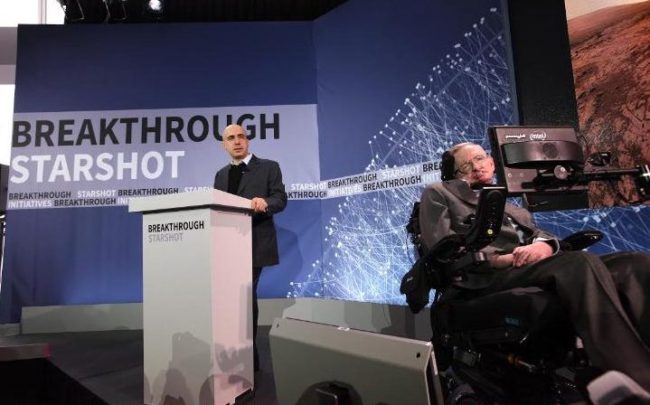
So the news is that a very ambitious interstellar space mission to get to Alpha Centauri in just 20 years has been proposed and is being jointly promoted by Facebook’s Mark Zuckerberg, Professor Stephen Hawking, and Russian billionaire Yuri Milner.
It sounded so far fetched that upon first hearing it I had to check the calendar and verify it was not a 1st April prank, but no, this is dead serious, here is the press conference for “Breakthrough Starshot” and its initial funding of $100 million …
So what exactly are they Proposing?
To be frank $100 million (yes Million not Billion) is small change when it comes to any space program, but what makes this interesting is that it brings new ideas to the table and that funding is just to get it up and rolling.
The basic idea is to deploy a “nano craft” (1 gram or less in weight) attached to a solar sail, and to them rapidly accelerate it to about 20% of light speed by firing an array of lasers at the sail to dump the required energy into it to achieve very rapid acceleration and speed.
We can’t just do it
Now the skeptical bit – There are still some quite serious technical problems to deal with here, and so they can’t just go out and do it.
Clearly some rather blindly obvious questions that do not currently have any answers spring up …
- How exactly do you get an array of earthbound lasers to focus, drill through earths atmosphere, and merge into one 100 gigawatt beam of light that hits a 1 meter interstellar sail, and then maintain that focus for the amount of time required to accelerate the craft to 20% light speed while the craft moves, and do all that without actually vaporising your nano craft attached to the interstellar sail?
- How do you build a nano craft that would be a max of 1 gram that could also be capable of beaming a signal 4.3 light years or more across the void back to earth?
- What material would you make an interstellar sail from that could absorb that quantity of energy?
In fact to be specific there are about 20 key challenges that they themselves identify, and so clearly they are not deluding themselves about about of this … and yet knowing what they know, they still dare to dream and to actually reach out and try.
The Timing of the Announcement
It is not simply random chance that this was announced on the 12th April, because exactly 55 years ago on that same day Yuri Gagarin astonished many by becoming the first human to leave planet earth, and so it is wholly appropriate for something like this to be coupled with such a significant date.
Who is in the Mix?
They have attracted a very impressive cast of movers and shakers …
The project will be directed by Pete Worden, a former director of NASA’s Ames Research Center. He has a prominent cast of advisers, including the Harvard astronomer Avi Loeb as chairman; the British astronomer royal Martin Rees; the Nobel Prize-winning astronomer Saul Perlmutter, of the University of California, Berkeley; Ann Druyan, an executive producer of the television mini-series “Cosmos: A Spacetime Odyssey” and the widow of Carl Sagan; and the mathematician and author Freeman Dyson, of the Institute for Advanced Study in Princeton, N.J.
Yes, it is still a dream, and yes there are incredible engineering challenges here, and yet part of what makes us human is our ability to dream such dreams, to stretch out to new horizons and dare to think about doing things that nobody has ever done before. Our refusal to accept the limits imposed , but to instead transcend them, very much sums up the human endeavour.
So can it be done?
Right now no it can’t, we don’t have answers to many of the engineering challenges, but we should also applaud them for refusing to accept that no and starting down a road that just might turn that “no” into a “yes”.
“The limit that confronts us now is the great void between us and the stars but now we can transcend it, with light beams and light sails and the lightest spacecraft ever built we can launch a mission to Alpha Centauri within a generation.” – Professor Stephen Hawking
Links
- The Breakthrough website is here.
- Best article on it all (IMHO) is one within the Science section of the New York Times.